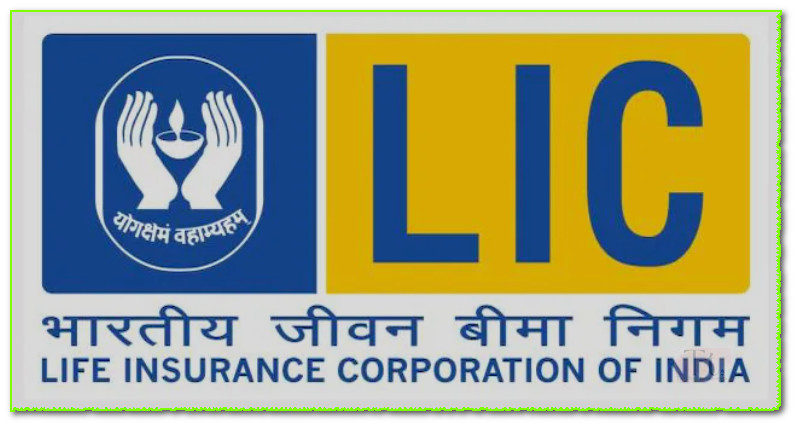Financial Update – As of November 1, 2023, the implementation of new financial rules on a monthly basis has become a customary occurrence in many sectors. The constant evolution and refinement of regulations that influence the daily lives of the general populace are a response to the dynamic nature of global economics, financial markets, governance, and societal needs. These guidelines, whether entirely new, amended, or reinforced, are instrumental in shaping the financial landscape and impacting individuals’ economic activities.
Table of Contents
The cyclical introduction of these financial updates serves various purposes, primarily aimed at fostering a more secure and efficient financial environment. The rules cover an extensive array of subjects, including but not limited to banking, taxation, investment, borrowing, and consumer protection. Understanding and adhering to these regulations are essential for individuals as they directly impact personal finances, influencing decisions on savings, expenditures, investments, and financial planning strategies.
For instance, in the realm of banking, these financial updates might pertain to changes in interest rates, loan eligibility criteria, or alterations in account maintenance fees. Such adjustments could affect the way individuals manage their bank accounts, take loans, or plan for their financial future. Simultaneously, the tax-related guidelines may introduce changes in tax rates, deductions, or reporting requirements, thereby influencing an individual’s tax liability, which in turn influences budgeting and financial decision-making.

Moreover, investment guidelines might encompass alterations in permissible investment instruments, tax benefits on certain investments, or regulations related to foreign investments. Compliance with these financial updates is critical for investors, impacting their portfolio choices, risk assessment, and potential returns. It can significantly affect an individual’s financial goals and strategies.
The guidelines also often extend to borrowing practices, influencing lending rates, eligibility criteria, or procedural changes in loan applications. These modifications might affect an individual’s ability to access credit and could impact their major life decisions such as purchasing a home, starting a business, or pursuing higher education.
Consumer protection guidelines, another crucial aspect, often focus on ensuring fair practices, transparency, and safeguarding consumers’ rights. This might include regulations on financial products, ensuring clear terms and conditions, protecting against predatory practices, or measures for dispute resolution. Compliance with these financial updates ensures that individuals are treated fairly in their financial dealings and have mechanisms for recourse in case of disputes.
The significance of staying informed about these financial updates cannot be overstated. They shape the financial landscape within which individuals make their economic decisions. Understanding these rules empowers individuals to make informed choices, navigate financial markets, and plan their financial futures effectively. Compliance with these financial updates not only ensures adherence to the law but also minimizes risks and maximizes opportunities within the financial realm.
However, the constant influx of new financial updates can also pose challenges, as keeping pace with these changes necessitates continual education and awareness. This might require individuals to seek financial advice, attend seminars, or rely on resources provided by financial institutions, regulatory bodies, and governmental agencies to stay up-to-date.
Gas Price Update: Recent Financial Update
The strategic approach in determining the pricing for CNG (Compressed Natural Gas), LPG (Liquefied Petroleum Gas), and PNG (Piped Natural Gas) holds substantial significance in the financial planning of individuals and various industries. The prevalent practice of unveiling fixed rates for these gas variants at the outset of each month is a widely adopted and pragmatic approach implemented by utility providers and governments.
CNG, recognized for its eco-friendly attributes and cost-effectiveness, serves as a prevalent vehicle fuel and finds applications in domestic and industrial settings. The stability in pricing, established at the commencement of the month and sustained throughout, affords consumers a predictable cost structure. This allows individuals to effectively plan their transportation or energy expenses for the entire month.
LPG, primarily used for heating, cooking, and occasionally in vehicles, experiences the benefit of fixed rates announced at the start of each month. This consistent pricing offers households and businesses the assurance of cost stability, enabling them to manage their budget and consumption patterns efficiently. It empowers decision-making regarding the utilization of LPG-based appliances or vehicles without concerns about fluctuating prices.
PNG, a form of natural gas supplied via pipelines directly to residences, industries, or commercial establishments, operates on a comparable pricing strategy. The declared fixed rates for PNG at the beginning of the month ensure stability for consumers, allowing them to plan their energy consumption and associated expenses for the entire month.
This practice of setting prices at the month’s commencement and preserving them simplifies financial planning for individuals, businesses, and industries. It provides consistency, enabling consumers to make informed choices regarding their gas usage, budgeting, and overall financial decisions without being subjected to frequent price fluctuations.
The fixed pricing for CNG, LPG, and PNG not only benefits consumers but also contributes to market stability. It minimizes uncertainties in the pricing structure, aids in long-term planning for industries reliant on these gases, and cultivates a more secure and predictable market environment.
Moreover, this method encourages energy efficiency and responsible consumption. With the assurance of consistent monthly prices, consumers may be inclined to use gas more prudently, reducing wastage and making conscientious decisions regarding their usage.
E-challan Update: Recent Financial Update
The requirement for companies with a minimum value of ₹100 crore to submit their Goods and Services Tax (GST) challan through the e-challan portal within the following 30 days, as specified by the National Informatics Centre (NIC), represents a significant step towards modernizing tax compliance procedures in India.

Goods and Services Tax, introduced in India in 2017, brought a significant change in the country’s taxation system by unifying various indirect taxes under a single umbrella. This move aimed to streamline tax compliance and facilitate a more efficient and transparent tax regime.
The mandate for companies meeting the prescribed financial threshold to submit their GST challan through the e-challan portal aligns with the government’s push towards digitalization and electronic governance. The e-challan system is designed to simplify the process of tax submission and payment, making it more convenient and accessible for businesses.
The requirement for these larger companies to use the e-challan portal for GST payments within a specified timeframe reflects the government’s efforts to encourage prompt and accurate tax filings. It also helps in reducing paperwork, minimizing errors, and enhancing the overall efficiency of tax collection and monitoring.
By imposing this deadline, the NIC aims to ensure timely compliance with GST regulations. This move helps in maintaining a systematic approach to tax submissions and assists the government in accurately tracking tax payments, which is crucial for the effective functioning of the GST system.
Additionally, this requirement underscores the significance of embracing digital platforms for financial transactions. E-challan portals offer a secure and streamlined method for businesses to fulfill their tax obligations, reducing the administrative burden and ensuring compliance with the tax laws and regulations.
Moreover, this initiative benefits the broader economy by fostering a culture of transparency, accountability, and timely tax payments. It supports the government’s revenue collection efforts, which are essential for financing various developmental initiatives and public services.
The implementation of e-challan systems for GST submissions also contributes to reducing the scope for manual errors, providing real-time tracking, and enhancing the overall efficiency of tax administration.
Laptop Import
Laptop Import Update: Recent Financial Update
The government’s decision to impose immediate limitations on the import of specific products, including laptops, personal computers (PCs), and tablets categorized under HSN (Harmonized System of Nomenclature) code 8741, signifies a strategic move in trade regulation and management. This regulatory action, initially announced on August 3, set in motion restrictions that were subsequently postponed until today, October 31, before their enforcement.

The postponement of these limitations allowed for a grace period, giving stakeholders, importers, and relevant entities time to prepare for the forthcoming changes in import regulations. As of today, without any further policy adjustments, the import clearance for the specified products – laptops, PCs, and tablets falling under HSN 8741 – will necessitate a valid ‘License for Restricted Imports.’
The requirement of a ‘License for Restricted Imports’ indicates that obtaining clearance for importing these products will now involve a more stringent process. The government’s decision to impose restrictions on these specific items suggests a deliberate effort to regulate and monitor the influx of certain goods, possibly due to reasons like trade balance considerations, boosting domestic production, or addressing concerns related to quality control or security.
These actions might aim to influence the local market dynamics by either promoting local manufacturing or regulating the flow of these items to align with the nation’s economic policies or security interests.
The enforcement of these restrictions and the introduction of the licensing requirement can significantly impact importers, businesses, and consumers. Importers will need to comply with the new regulations, ensuring they obtain the necessary licensing to bring in the affected items. This could lead to changes in procurement strategies and may potentially affect the availability and pricing of these electronic devices in the local market.
For consumers, the imposition of such import restrictions might affect product availability, pricing, or even the diversity of options in the market. It might prompt a shift in purchasing decisions or lead to adjustments in the prices of these items due to changes in supply and demand dynamics.
The postulated period until further policy adjustments are declared suggests a level of uncertainty regarding the future direction of these import limitations. It remains crucial for stakeholders involved in the import and trade of these products to stay abreast of any new developments, policy alterations, or announcements by the government that might impact the importation and distribution of laptops, PCs, and tablets under HSN 8741.
In conclusion, the postponement of restrictions and the subsequent requirement for a ‘License for Restricted Imports’ for laptops, PCs, and tablets categorized under HSN 8741 marks a significant regulatory change in the import landscape. This decision demonstrates the government’s interest in managing the importation of specific electronic devices and underscores the need for compliance with the new import regulations until any further policy adjustments are declared.
Lapsed LIC Policy Reopening Update: Recent Financial Update
The news article highlights a significant financial deadline: October 31 is identified as the final day for reopening a lapsed Life Insurance Corporation (LIC) policy. This indicates that policyholders who allowed their LIC policies to lapse, likely due to non-payment of premiums, have until this date to reinstate or revive these lapsed policies.

Life insurance policies, when in force, provide financial protection and benefits to policyholders and their beneficiaries in the event of unforeseen circumstances, such as death or critical illness, depending on the policy’s terms. When a policy lapses due to non-payment of premiums within the stipulated grace period, the coverage and benefits associated with the policy become inactive.
The window for reviving a lapsed LIC policy typically comes with certain conditions and a limited timeframe. Policyholders can reinstate their lapsed policies by paying the overdue premiums, possibly with applicable interest, and fulfilling any additional requirements set forth by LIC.
October 31, as mentioned in the article, marks the end of this opportunity to revive lapsed LIC policies. After this deadline, policyholders might lose the chance to reinstate their lapsed policies, resulting in a permanent loss of the insurance coverage and benefits associated with those policies.
It is essential for individuals who have lapsed LIC policies to take prompt action and consider reviving their policies within the specified timeframe to ensure the continuity of their life insurance coverage and associated benefits. After this deadline, reinstating a lapsed policy might not be an available option.
Transaction Fees Update: Recent Financial Update
The Bombay Stock Exchange (BSE), one of the primary stock exchanges in India, has announced an upcoming increase in transaction charges specifically within the equity derivative segment. This decision, communicated by the BSE on October 20, indicates that there will be an adjustment in the fees associated with transactions made in this particular market segment.
Derivatives, including equity derivatives, are financial instruments whose value is derived from an underlying asset or group of assets, in this case, equities or stocks. These instruments are frequently used for hedging, risk management, or speculative purposes in the financial markets.

The decision to raise transaction charges in the equity derivative segment suggests that participants engaging in derivative transactions on the BSE will incur higher fees for their trades within this specific market. Such fee adjustments can impact traders, investors, and financial institutions involved in equity derivatives trading.
The rationale behind such fee modifications can vary and might be influenced by several factors. Stock exchanges often review and adjust their fee structures to align with changing market dynamics, cost considerations, operational expenses, regulatory compliance, or to optimize revenue generation.
This move by the BSE could potentially have implications for market participants. Traders and investors dealing in equity derivatives at the BSE will need to account for these increased transaction charges, which could impact their overall trading costs and potentially influence their trading strategies.
It’s common for such decisions to be communicated well in advance, allowing market participants to plan and adjust their strategies or trading activities accordingly. These changes in transaction fees within the equity derivative segment highlight the evolving nature of the financial markets and the need for market participants to adapt to such adjustments in order to navigate the market effectively.
As with any modification in transaction fees, this decision by the BSE might lead to discussions and considerations among market participants, as they assess the impact of increased charges and potentially adjust their trading strategies or approach to accommodate these changes within the equity derivatives market segment.
Here’s a summary of the key points covered in the provided Above
Gas Prices: Monthly fixed rates for CNG, LPG, and PNG are announced on the first day of each month, impacting budgeting and financial planning for consumers and businesses.
E-Challan for GST: Companies with a minimum value of ₹100 crore are required to submit their GST challan through the e-challan portal within the next 30 days, as per the National Informatics Centre (NIC), emphasizing the shift towards digital tax compliance.
Laptop Import Restrictions: The government imposed immediate limitations on the import of certain electronics, including laptops, PCs, and tablets categorized under HSN 8741. The implementation, initially set for October 31, now requires a ‘License for Restricted Imports’ until further policy adjustments are made.
Lapsed LIC Policy Reopening: October 31 marked the final day for policyholders to reopen a lapsed Life Insurance Corporation (LIC) policy. After this deadline, reinstating a lapsed policy might not be an available option, emphasizing the importance of timely action for policyholders.
BSE Transaction Fee Increase: The Bombay Stock Exchange (BSE) is set to raise charges for transactions within the equity derivative segment, announced on October 20. This decision is likely to impact traders and investors involved in the equity derivatives market, prompting them to adapt to the increased transaction fees.
Conclusion
In conclusion, the highlighted financial changes underscore the dynamic nature of various sectors, emphasizing the need for individuals and businesses to adapt to evolving regulations, digital tax compliance, import restrictions, and impending financial deadlines. These changes necessitate timely action, strategic planning, and adaptation to the shifting landscape of financial regulations and market dynamics. Staying informed and proactive in response to these changes is vital for effectively managing personal finances and navigating the evolving financial environment.
Read About…..
Ballon d’Or 2023: Messi, Bonmati Eye Glorious Win
All Images are taken From pixabay

1 thought on “5 Big Financial Updates Taking Effect from November”